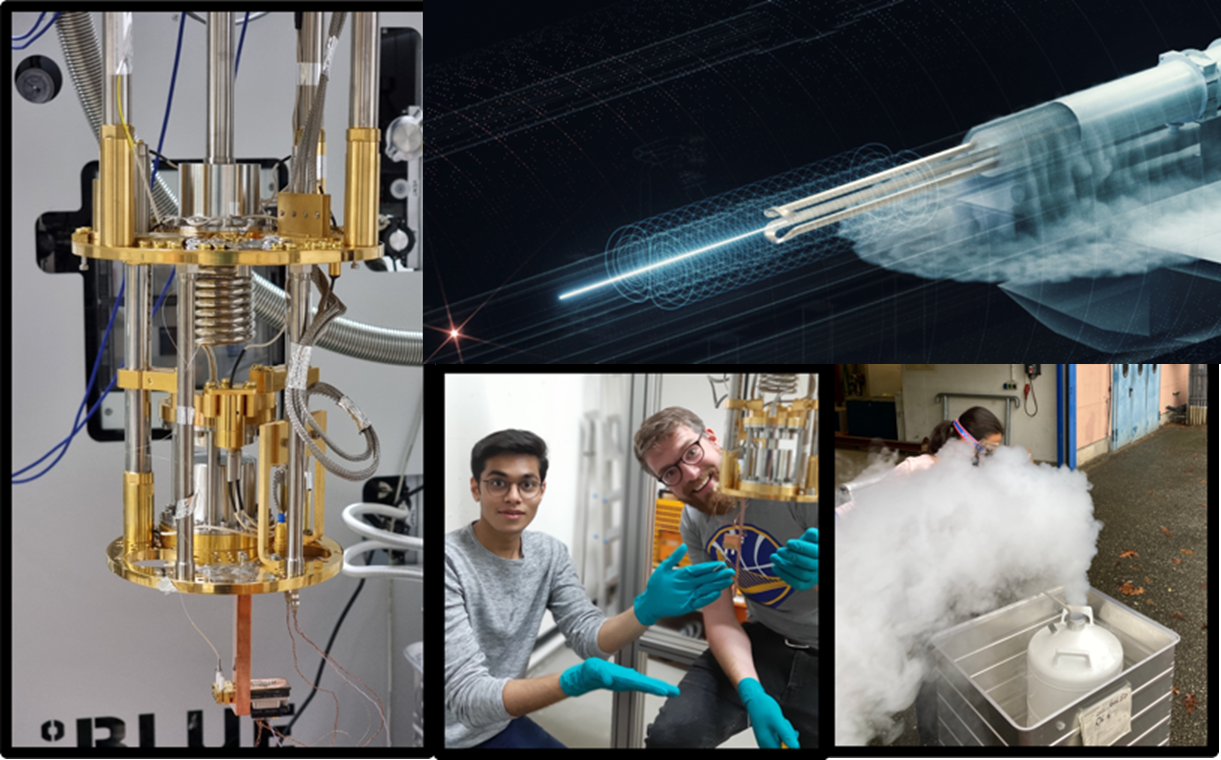Vejleder: Manuel Meyer
Project types
Bachelor and Master
Research topics
Particle and astroparticle physics, single photon detection
Research methods
Experimental (detector component characterization, working with infrared lasers / optical fibers, quantum sensors), Theoretical (data analysis and interpretation, simulations)
Introduction to my research
Using both laboratory experiments as well as observations of galaxies and other astrophysical sources, I try to understand the nature of the mysterious dark matter. Dark matter makes up roughly 85% of all matter in the Universe and could consist of yet-undiscovered elementary particles. Theory predicts that dark matter could possibly reveal itself in very weak interactions with light. In the experiments I’m involved in, we try to look for this interaction by shining light through walls and by searching for features in spectra of distant galaxies and supernova explosions.
More info on: https://axion-alp-dm.github.io/

Examples of thesis projects
I can offer a variety of thesis topics depending on the courses you have attended and if you rather like to work “hands-on” in the lab or with data analysis. The projects can either be related to the ALPS II large-scale laboratory experiment or to astrophysical high-energy gamma-ray observations. Please reach out via email if you are interested!
Example project: Characterization of optical filter and improvement of the signal and background discrimination
The ALPS II experiment aims to produce hypothetical particles, so-called axions, by sending a powerful infrared laser beam into an optical cavity and through a magnetic field. Laser photons could convert to axions in the magnetic field, leave the cavity, and re-convert into photons in a second magnetic field. The number of reconverted photons will be tiny (we expect at most around one photon per day). Therefore, we need sensitive single photon detectors and an effective suppression of any potential background. One investigated detector technology is a superconducting transition edge sensor that counts photons at a temperature close to absolute zero. Here at SDU, we are investigating ways to reduce the number of spurious photons reaching the detector. One possibility is to use an optical filter inside the cryostat which we are currently building in our lab. We are also looking into using machine-learning algorithms to achieve a better discrimination between signal and background events registered with the detector. We are always looking for students to help us with these projects.
Example project: Searching for physics beyond the standard model with gamma-ray observations
Charged particles like electrons can be accelerated to almost the speed of light in extreme environments in the Universe, for example in remnants of supernova explosions or close to supermassive black holes. These particles can produce gamma rays, i.e., photons one million times more energetic than X-rays. The gamma-ray spectra of these sources could be affected by beyond-the-standard-model physics. For instance, certain theories that try to combine General Relativity and the Standard Model predict that Lorentz Invariance breaks down above a certain energy. This could lead to observable features such as a suppression of the gamma-ray flux. In this project, we will model the broad-band emission of the Crab nebula, one of the brightest gamma-ray sources in the sky. Using this model, we will make predictions for gamma-ray observations in the presence of Lorentz Invariance Violation and confront our predictions with data from Imaging Air Cherenkov Telescopes and the Fermi satellite.
